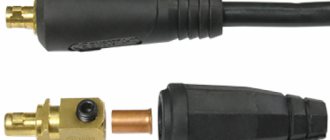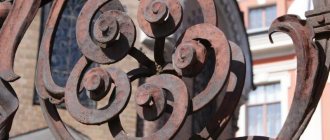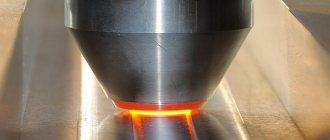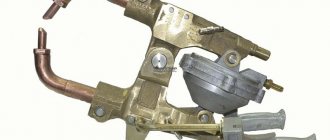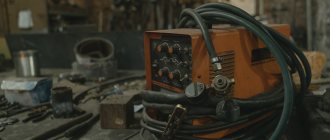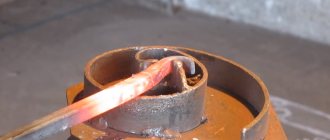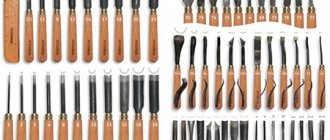Forge welding is one of the oldest methods of permanently joining metals. Humanity used forge or forge welding for almost three thousand years as the only one for the manufacture of various iron products, until they learned to melt it, having also mastered foundry welding. But with the development of technological progress, other effective ways of joining metals to each other appeared, so forging welding has practically ceased to be used in industrial production.
What can be made from metal
The most popular products that are created using welding are practical household structures, furniture and decorative elements.
Household products include elements of fences, gates, as well as small products such as boxes, containers for food and other things. The artistic welding method allows not only to give the desired shape to the product, but also to create an original pattern or texture on the surface.
Metal specialists can make decorative tables, coffee tables, chairs, hangers, shoe racks and other items that serve a practical function and are used indoors or outdoors.
Such artistic furniture has an original appearance, is not afraid of moisture when properly processed, can withstand heavy mechanical loads, and has a long service life.
The cost of artistic welding cannot be called low due to the material used in the work. These are mainly titanium and stainless steel. Zirconium is used to obtain color shades.
Artistic welding allows you to create a variety of objects used for decoration. These can be animal figures, ornamental details for decorating walls, ceilings, columns or arches, details in the shape of flowers and plants.
The number of options to choose from depends solely on the wishes of the client and his budget, as well as the style features of the interior. Most often, decorative items created by welding are ordered by people living in luxury cottages and who want to demonstrate a sense of taste and originality of design. But everyone can afford a small stainless steel craft.
How to ignite an electrode
There are two ways. Option one: ignite the electrode - end-to-end (by touching). Option two: strike. The methods are clear from the photo below.
The second method is similar to lighting a match on a matchbox. The first method is sometimes replaced by lightly tapping the workpiece. When the electrode is new and the metal of the rod is visible at the tip, ignition of the arc occurs easily.
If the electrode has been in use, a coating may appear around the rod. The protective coating of the electrode does not conduct electric current. Therefore, it needs to be knocked off by tapping the tip of the electrode on the part to be welded several times. Easy ignition of the electrode is a skill that has been brought to automaticity.
Advantages of welded products
One of the main advantages of things created using artistic welding is their beautiful and original appearance.
This method makes it possible to produce hundreds and thousands of options for finished products and parts that can perform a practical function or serve solely as decoration. Welding allows you to create elegant and attractive objects that cannot be replicated exactly.
Although it is a relatively new art form, unlike forging, it is gaining more and more attention. One of the centers of artistic welding is the Paton Institute.
Another advantage of iron products made using artistic welding is their high strength and reliability. Such items, be it ornaments for decorating a fence or furniture for the street, are not afraid of increased mechanical loads, have a long service life, do not require specific or complex care, maintaining not only their physical qualities, but also their appearance. For additional protection of artistic products, you can use special compounds to repel dust, dirt and moisture.
Metal crafts combine well with other objects and various materials, including brick, block, stone and wood.
If, for example, welded decorative elements are intended to decorate a fence or gate, they look great in combination with corrugated sheets, red and facing bricks, concrete and other materials.
Furniture created by artistic welding looks beautiful in a classic, Baroque, Romanesque, Greek style interior, and small items can decorate a room decorated in the High-Tech direction.
Artistic welding: from experiment to new art
Our readers are well aware of all the main areas of artistic metal processing - hot and cold forging, casting. But today another, fundamentally new and promising direction has emerged for creating easel and applied works of art from such a durable but malleable material. This is art welding, which was started by specialists from the Kyiv Institute of Welding named after. E.O. Paton. It gives new opportunities to artists who translate their ideas into metal. We bring to your attention an interview with one of the leading masters of this direction, an employee of the Institute named after. E.O. Paton by Dmitry Kushniruk.
Dmitry, artistic welding is a relatively new area of metal processing. How did it arise and develop? What is the role of your teacher Grigory Grigorievich Dochkin here?
Grigory Grigorievich is a pioneer in this field of welding. Dochkin worked at a military plant in Omsk, where at that time they were welding titanium. It was there that he had the idea to experiment with a metal like titanium, doing something new with it, significantly different from traditional, technical welding. At first, he made planar works on titanium sheets - he put seams on the sheet and welded silhouettes with the seams. And subsequently, voluminous works appeared.
How did you get into artistic welding yourself, and why did you choose it?
After joining the Paton Institute, I began to study technical welding. During this period, I saw for the first time artistic products that were created using welding. I liked it, they interested me, and I decided to try myself in this direction, and considering that I am a creative person by nature, then I succeeded. I became seriously interested in this business and fell in love with working with this type of technology. You can also say that the impetus for taking up artistic welding was the fact that I saw what could be achieved by welding with metal, in this case titanium. Although it is possible to use other materials.
Dmitry Kushniruk. Snake table
Dmitry Kushniruk. Frog on a leaf. Size: 20×15x15 cm
What are the fundamental technical differences between artistic welding technologies and conventional welding techniques?
In technical welding, such a phenomenon as discoloration is unacceptable; this is considered a serious defect and is classified as a defect. But what is called defect in technical welding is specifically used in artistic welding as a decorative technique.
Tarnish colors are rainbow stains (straw, gold, purple, violet and other colors) on the clean surface of heated metal, resulting from the appearance of a thin layer of oxides. This thin oxide film, a few molecules thick, forms on the surface of a pure metal under the influence of a local heat source, its color depends on the thickness, since oxides of different thicknesses reflect light differently. The thickness differing in different areas causes the appearance of multi-colored stains. Metal processing by welding creates temperatures high enough for the formation of tarnished colors, but in technical welding this must be avoided, since tarnished colors worsen the appearance of products and are considered defective.
Artistic welding of titanium today is an argon-arc torch, two eyes and two hands of a welder, plus material.
This is completely manual work, not an assembly line. But if a person appears who can put this on a conveyor belt, then artistic welding will cease to be an art...
What is the application of these products? How widespread are items made in this way among design solutions?
Products made using artistic welding technologies are widely used. Art welding masters are able to produce products for a wide variety of purposes; they can vary widely in size. With the help of artistic welding, you can make anything, from small products - miniature figures (flies, ants, candlesticks, etc.) to architectural details (for example, gates) and sculptural compositions that decorate houses, parks, gardens. Readers can see examples of our work in the photographs.
Dmitry Kushniruk. Bird
What materials are used in artistic welding - is it only titanium, or are other metals used?
Indeed, we are talking mainly about titanium. Zirconium is used as an auxiliary metal, allowing additional shades of colors to be obtained. Relatively large architectural details, such as gates, are mainly made of stainless steel, but titanium is used in their decorative elements. They, like park sculptures, can be made only from titanium, but this requires considerable time and is quite expensive.
Institute of Welding named after. E.O. Paton, a recognized center for research in its field, also became one of those places where the art of artistic welding was born and developed. Where else is this trend actively cultivated and which famous masters could you name? Where can you see their work?
Dmitry Kushniruk. Vase with dragon
Dmitry Kushniruk. Dinosaur
As far as I know, this direction is quite new, and, according to my information, today no one else, except me and my teacher Grigory Dochkin, specializes in this type of art. The leading master, of course, remains Grigory Grigorievich, who began conducting master classes in the direction he founded. You can get acquainted with the works made using this technique at our institute, where there is a permanent exhibition. In addition, we regularly organize exhibitions outside the institute.
Is there a high level of interest in this direction among craftsmen and customers and what are the prospects for its development?
Previously, artistic welding aroused great interest only among foreign customers. What was the reason for this? Most likely, financial difficulties and lack of information. Today, on the contrary, the interest of domestic customers is great. I think that the prospects for the development of such a direction of artistic metal processing as art welding are quite good, since, from my point of view, such use of welding and the creation of works of art with its help is of undoubted interest both for metal artists and for spectators .
ostmetal.info
Tools and drawings
To practice artistic welding using rolled metal, you need the following devices and equipment:
- a machine for manual argon arc welding (they use it to weld non-ferrous metals and stainless steel), a torch for it, filler wire and an argon cylinder;
- paper. Without it, it is impossible to draw drawings with determination of dimensions and small nuances that are difficult to take into account when visualizing without a plan. However, in the modern world you can also use computer programs;
- stationery for marking (pencil, ruler, protractor);
- working surface, which must be made of materials resistant to high temperatures and flames.
Before starting work on artistic welding, it is necessary to make a drawing and think about what size the product will be, what it is intended for, and what style it should be combined with.
The finished image is only part of such a drawing. In addition to the sketch, it is necessary to draw individual details, indicate connection points and their number, and examine the object in several planes.
Main job
At this stage, the master selects the material. Thus, for small and elegant figures or sculptures, titanium can be used in its pure form or with small additions of zirconium, which gives the products a special shine.
When artistic welding is used to create a fence, gate, furniture or other large objects, steel is usually used as the base material. The stainless steel construction is not susceptible to the negative influence of moisture and is resistant to accidental and targeted impacts.
After determining the materials, shape and dimensions, the master, using a welding machine, produces the desired item.
Depending on the complexity and size, artistic welding can take from 1 day to several weeks.
The surface can be polished or engraved; in some cases, individual fragments are decorated with tarnish colors. This is an effect in which the steel surface becomes iridescent and iridescent, and is achieved through exposure to high temperatures. After the product is ready, it must cool.
Safety precautions and processing nuances
Like any other welding work, artistic welding requires strict adherence to safety rules.
If you use the equipment incorrectly, you can get an electric shock, become partially or completely blind when exposed to ultraviolet radiation or scale, get poisoned by fumes arising from metal processing, get burned as a result of the melting of the material or an accidental explosion of the cylinder.
Such consequences are dangerous to health and life, so you need to use a mask and protective clothing . It is best to choose a product with chameleon glass, which changes the degree of darkness depending on the amount of ultraviolet light hitting the surface
Before you start welding steel, you need to clear the work area of foreign objects. It is better to start experiments in artistic welding with products of simple shape.
It is also necessary to study welding techniques well in order to firmly connect structural parts and spend a minimum of time on this.
Which polarity to choose when welding metal with electrodes
The inverter for manual arc welding produces direct current. If you look at the front panel of the device, you will see that there are two connectors for connecting welding cables marked + and -.
Straight polarity : a “clothespin” is connected to the plus of the device, and a holder is connected to the minus.
Reverse polarity : the electrode holder is connected to the plus of the device, and the “clothespin” clamp is connected to the minus.
Which polarity should I choose? Many copies have been broken about this issue. If you open educational materials on welding and ask on the Internet, you can often hear the opinion that with “straight polarity” the metal being welded is better heated and melted .
Practice refutes this.
When welding, more heat is generated at the contact with the plus, therefore, in reverse polarity , the holder is connected to the plus, the penetration is always deeper . As a result, it is better to weld metal with thick walls using reverse polarity. This is a profile pipe, plates, corner with a thickness of 4-5 mm. Conversely, with direct polarity it is necessary to weld thin metal, no more than 1.5-2 mm thick, in order to avoid melting of the walls and the appearance of holes.
You can verify the veracity of this statement in practice. Take a welding inverter, set the welding current to 100 A. Connect the electrode holder and ground to the connectors of the device and cut the metal - a plate 4-5 mm thick, an angle or fitting, first in direct and then in reverse polarity, without changing the current strength and electrode with a diameter of 3 mm. You will see that metal cutting is faster with reverse polarity.

